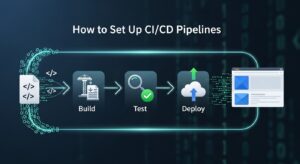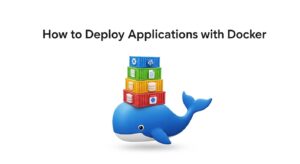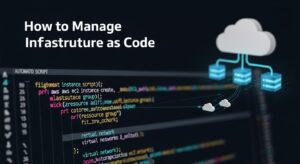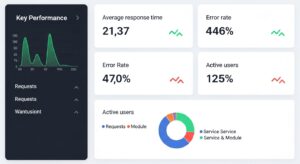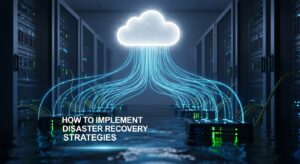When you think about your organization’s digital assets, what keeps you awake at night? For most IT leaders, it’s the challenge of how to secure cloud applications effectively while maintaining seamless business operations.
Cloud applications have revolutionized how businesses operate, offering unprecedented scalability and flexibility. However, this digital transformation has also introduced complex security challenges that traditional on-premises security models simply cannot address. Understanding how to secure cloud applications isn’t just a technical necessity—it’s become a business imperative that directly impacts your organization’s reputation, compliance status, and bottom line.
Understanding Cloud Application Security Fundamentals
Before diving into specific strategies, let’s establish what we mean by cloud application security. Cloud application security encompasses the policies, technologies, and controls designed to protect cloud-based applications, data, and infrastructure from cyber threats.
The shared responsibility model forms the foundation of cloud security. While cloud service providers (CSPs) like Amazon Web Services, Microsoft Azure, and Google Cloud Platform secure the underlying infrastructure, organizations remain responsible for securing their applications, data, and user access.
Key Differences from Traditional Security
Cloud application security differs significantly from traditional on-premises security in several ways:
- Dynamic Infrastructure: Cloud resources scale automatically, making static security configurations inadequate.
- Shared Responsibility: Security responsibilities are distributed between you and your cloud provider.
- API-Driven Architecture: Everything in the cloud is API-accessible, creating new attack vectors.
- Multi-Tenancy Concerns: Your applications may share infrastructure with other organizations.
Strategy 1: Implement Strong Identity and Access Management (IAM)
The first line of defense for any cloud application security strategy is robust identity and access management. IAM controls who can access your applications and what they can do once inside.
Multi-Factor Authentication (MFA)
Implementing MFA reduces the risk of unauthorized access by 99.9%, according to Microsoft’s security research. Every user accessing your cloud applications should authenticate using at least two factors:
- Something they know (password)
- Something they have (mobile device, hardware token)
- Something they are (biometric data)
Role-Based Access Control (RBAC)
Design your access controls around the principle of least privilege. Users should only have access to the resources necessary for their job functions. Create specific roles such as:
- Application administrators
- Database read-only users
- Security auditors
- End users
Regular Access Reviews
Conduct quarterly access reviews to ensure permissions remain appropriate. Remove access for departed employees immediately and adjust permissions when roles change.
Strategy 2: Secure Cloud Applications Development Practices
Building security into your applications from the ground up is more effective and cost-efficient than retrofitting security later.
DevSecOps Integration
Integrate security testing throughout your development lifecycle rather than treating it as a final step. This approach, known as “shifting left,” helps identify vulnerabilities early when they’re less expensive to fix.
Key DevSecOps practices include:
- Static Application Security Testing (SAST)
- Dynamic Application Security Testing (DAST)
- Interactive Application Security Testing (IAST)
- Software Composition Analysis (SCA)
Secure Coding Standards
Establish and enforce secure coding standards that address common vulnerabilities outlined in the OWASP Top 10. Train developers on secure coding practices and conduct regular code reviews focused on security.
Container Security
If using containerized applications, implement container-specific security measures:
- Scan container images for vulnerabilities
- Use minimal base images
- Implement runtime protection
- Regularly update container orchestration platforms
Strategy 3: Data Protection and Encryption
Data is often the primary target of cyberattacks, making data protection crucial for cloud application security.
Encryption at Rest and in Transit
Encrypt sensitive data both when stored (at rest) and when transmitted (in transit). Use industry-standard encryption algorithms like AES-256 for data at rest and TLS 1.3 for data in transit.
Encryption Type | Use Case | Recommended Standard |
Data at Rest | Database storage | AES-256 |
Data in Transit | API communications | TLS 1.3 |
Application-level | Sensitive fields | Field-level encryption |
Key Management
Implement a robust key management strategy using cloud-native services like AWS Key Management Service (KMS), Azure Key Vault, or Google Cloud KMS. Never hardcode encryption keys in your applications.
Data Classification and Handling
Classify your data based on sensitivity levels and implement appropriate protection measures for each classification. Establish clear data handling procedures for:
- Public data
- Internal data
- Confidential data
- Restricted data
Strategy 4: Network Security and Segmentation
Network security provides essential perimeter protection for your cloud applications.
Virtual Private Clouds (VPCs)
Deploy your applications within VPCs to create isolated network environments. Use multiple subnets to segment different application tiers:
- Public subnets for load balancers
- Private subnets for application servers
- Database subnets for data storage
Web Application Firewalls (WAF)
Implement a WAF to filter malicious traffic before it reaches your applications. Cloud providers offer managed WAF services that can detect and block common attacks like:
- SQL injection
- Cross-site scripting (XSS)
- DDoS attacks
- Bot traffic
Network Monitoring
Deploy network monitoring tools to detect suspicious activities and potential breaches. Use tools like AWS GuardDuty or Azure Sentinel for threat detection and response.
Strategy 5: Continuous Security Monitoring and Incident Response
Effective cloud application security requires continuous monitoring and rapid incident response capabilities.
Security Information and Event Management (SIEM)
Implement a SIEM solution to collect, analyze, and correlate security events across your cloud environment. Modern cloud-native SIEM solutions can:
- Aggregate logs from multiple sources
- Apply machine learning for anomaly detection
- Provide real-time alerting
- Enable automated response actions
Vulnerability Management
Establish a comprehensive vulnerability management program that includes:
- Regular vulnerability scanning
- Risk-based prioritization
- Patch management procedures
- Remediation tracking
Incident Response Planning
Develop and regularly test incident response procedures specific to cloud environments. Your incident response plan should address:
- Cloud-specific forensics procedures
- Communication protocols
- Recovery procedures
- Post-incident analysis
Strategy 6: Compliance and Governance Framework
Maintaining compliance while securing cloud applications requires a structured governance approach.
Compliance Requirements
Identify applicable compliance requirements for your industry, such as:
- GDPR for organizations handling EU personal data
- HIPAA for healthcare organizations
- PCI DSS for organizations processing credit card data
- SOX for publicly traded companies
Cloud Security Frameworks
Adopt established cloud security frameworks like the Cloud Security Alliance (CSA) Cloud Controls Matrix or the NIST Cybersecurity Framework to structure your security program.
Regular Auditing
Conduct regular security audits and assessments to validate your security controls’ effectiveness. Consider engaging third-party security firms for independent assessments.
Strategy 7: Advanced Threat Protection and Zero Trust Architecture
Modern cloud application security increasingly relies on advanced threat protection and zero trust principles.
Zero Trust Implementation
Implement zero trust architecture principles:
- Never trust, always verify
- Least-privilege access
- Micro-segmentation
- Continuous monitoring
Behavioral Analytics
Deploy User and Entity Behavior Analytics (UEBA) tools to detect abnormal user behavior that might indicate compromised accounts or insider threats.
Threat Intelligence Integration
Integrate threat intelligence feeds into your security tools to stay current with emerging threats and attack patterns specific to your industry.
Common Cloud Security Mistakes to Avoid
Learning from common mistakes can help you avoid costly security incidents:
- Misconfigured Cloud Storage: Ensure cloud storage buckets and containers are properly configured with appropriate access controls.
- Insufficient Logging: Enable comprehensive logging across all cloud services to support security monitoring and compliance requirements.
- Neglecting Third-Party Integrations: Assess the security posture of third-party applications and services integrated with your cloud applications.
- Inadequate Backup and Recovery: Implement robust backup and disaster recovery procedures that are regularly tested.
Building Your Cloud Security Team
Successfully implementing these strategies requires the right team and skills:
- Cloud Security Architects who understand both security principles and cloud technologies.
- DevSecOps Engineers who can integrate security into development workflows.
- Security Operations Center (SOC) Analysts trained on cloud-specific threats and tools.
- Compliance Specialists familiar with cloud compliance requirements.
Measuring Cloud Application Security Success
Establish key performance indicators (KPIs) to measure your cloud application security program’s effectiveness:
- Mean time to detect (MTTD) security incidents
- Mean time to respond (MTTR) to security events
- Number of vulnerabilities remediated within SLA
- Compliance audit results
- Security training completion rates
Looking Ahead: Future of Cloud Application Security
As cloud technology evolves, so do security challenges and solutions. Stay informed about emerging trends like:
- Serverless security considerations
- Container security automation
- AI-powered threat detection
- Quantum-resistant encryption
- Cloud-native security tools
Conclusion
Learning how to secure cloud applications effectively requires a comprehensive, layered approach that addresses technical, procedural, and human factors. The seven strategies outlined in this guide provide a solid foundation for protecting your cloud applications against evolving cyber threats.
Cloud application security is not a one-time implementation but an ongoing process that requires continuous attention, updates, and improvements. Start with the fundamentals—strong IAM, secure development practices, and data protection—then gradually implement more advanced strategies like zero trust architecture and behavioral analytics.
The investment in robust cloud application security measures will pay dividends in protecting your organization’s reputation, maintaining customer trust, and ensuring business continuity in our increasingly digital world.
What aspects of cloud application security are you most concerned about in your organization? Which of these strategies do you plan to implement first?



